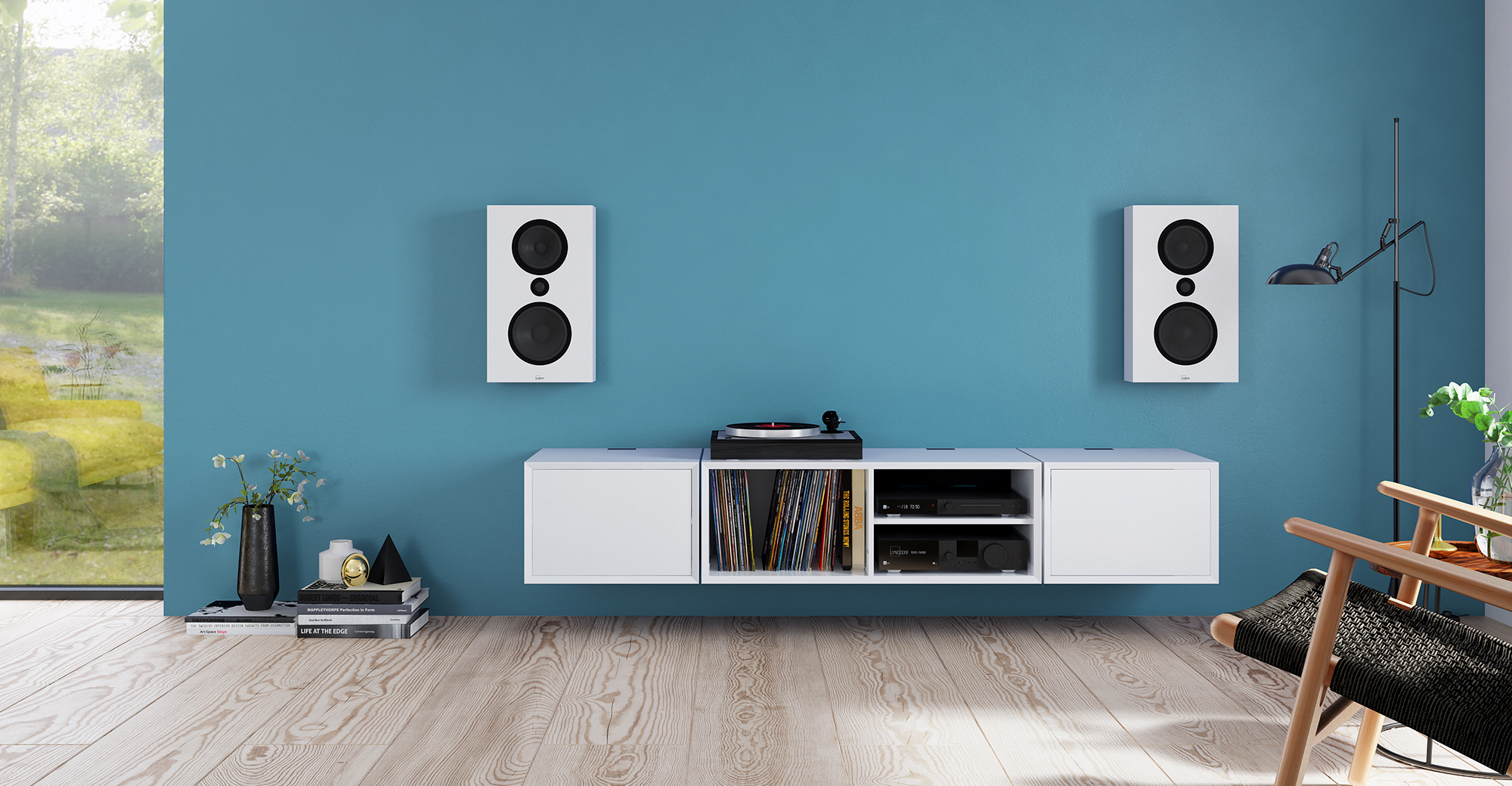
Expert advice
How to improve room acoustics
Lyngdorf amplifiers and processors include RoomPerfect™, an advanced digital signal processing taking care of room acoustical issues. Also, Lyngdorf loudspeakers are designed benefitting from room acoustics rather than working against it. But what can be done to improve room acoustics? Here’s some practical advice for everyone.
1. Sit and listen comfortably
Most advice on room acoustics is about the room itself and where to place the speakers. But it’s a good idea to start at your listening seat. The famous and important stereo triangle not only consists of the two front speakers, but the third spot: your listening position. Are you sitting comfortably? A defined, relaxed listening armchair or sofa with enough space around you is an important starting point. The next boundaries to the sides and especially behind you should be as far away as possible to avoid so-called early reflections, which spoil the desired, well defined sound image in front of you. Natural sound absorption and diffusion from drapes, wall carpets, bookcases, furniture, lampshades, plants, and other decoration is better than hard reflective walls or windows. Last not least the seating height should match your speakers, with your ears on the same level as the tweeters.
2. Mark your speakers
This seems a little bit nerdy at first, but it helps finding the best speaker positions. No matter where your speakers are, use light masking tape to outline the speakers on the floor. You can read plenty of advice where the speakers theoretically sound best in the room, but with a good pair of ears and marked speaker positions you can move the speakers around and listen. The masking tape helps trying defined new positions, and also ensures doing the same changes to the left and right speaker, which is important for the stereo image. Does it sound better moving both speakers back? Does it sound better moving them forward? Does a more narrow or wider stereo width sound better? Does it sound better angling the speakers more inwards or outwards? Follow your ears, keep the best spots, and remove the tape.
3. Listen to Pink Noise
Another special piece of advice. Listening to music is the real thing, but in search for the best speaker position or listening spot this trick will help you to focus. Find a download or streaming file with ‘pink noise’. This sound is identical on the left and right speaker and contains all frequencies. Choose a listenable volume level, and listen carefully: Move your head slowly back and forth – how does the sound change? Move your head sideways – is the sound well-defined right in the middle between the speakers? Move your chair, move your speakers, change drapes and furniture – how does it affect the sound? With pink noise you won’t be distracted by instrument solos or singing voices and can easily hear the changes. Aim for an even, balanced sound and the most focused sound image between the speakers.
4. Learn a song
This is again about focusing. Generally, choose a good recording from a good studio and a high-resolution audio format. This will help you to hear the improvements in your room much more easily. But it’s equally important to really know the track well. Choose your favorite song and listen to it over and over again. Also listen to it on your headphones. Listen for how deep you can hear into the recorded studio, where exactly the instruments and singing voices are mixed, follow sound effects moving between the speakers, and notice how piano or bass note fade. The better you know the recording, the easier it is to hear different speaker positions, listening spots, and room changes.
5. Mind the gap
Apart from the boundaries around your seat and around the speakers, the space between you and the speakers is also important. This is an area of so-called early reflections. The sound from the speakers, especially in the lower midrange and upper bass, bounces back from the floor and adds to the original sound from the speakers. Similar to reflections coming from the sides, floor reflections blur the sound image between the speakers. Find a good balance between room design and acoustics – a nice carpet placed between you and the speakers works wonders acoustically.
6. Improve the sound with RoomPerfect™
No room sounds perfect, unless you want to live in a dedicated measurement room or soundproof studio. While improving room acoustics is a good thing and can even look good using drapes, carpets, and big comfortable sofas, you’ll reach a limit where the physics of room acoustics and room dimensions are in charge. This is very much audible in the lower frequencies, ranging from over-exaggerated bass to a complete lack of bass, certain bass notes sounding off-key, as well as a lack of punch and definition. That’s where Lyngdorf’s RoomPerfect™ technology comes in. It measures the room acoustics and adjusts the sound signal accordingly, addressing room acoustical problems before they even build up. Fine-tuning your room acoustics and then using RoomPerfect™ will clearly elevate your sound experience.
RoomPerfect™
Most high-end products are developed in sonically ideal listening rooms with optimized dimensions and acoustic treatments. However, in reality, sound systems are installed in authentic living spaces, not sound labs. Your sound system should be perfect in your environment – and we can promise it will be.



